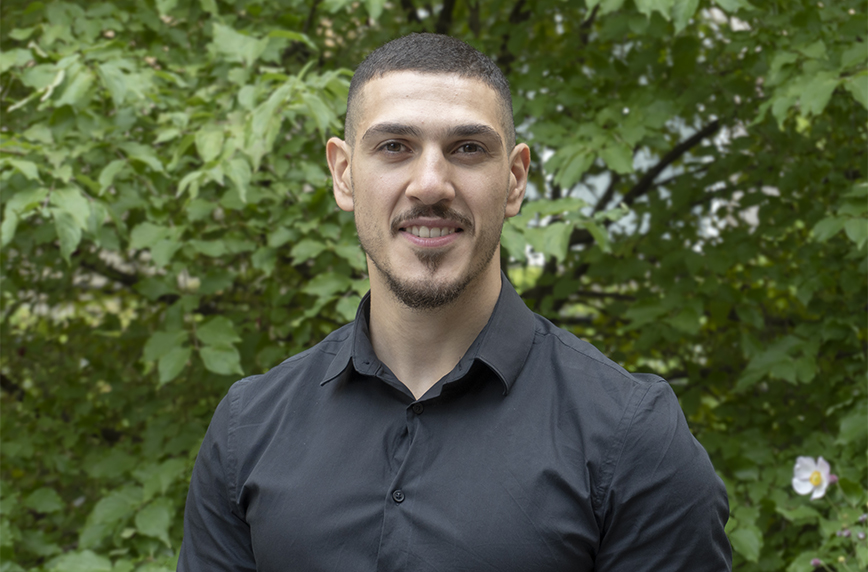Muhannad
Muhannad comes from Syria and came to KTH to get his bachelor's degree in civil engineering. After that he stayed at KTH to get his master's degree in civil and architectural engineering. He enjoys all kinds of outdoor activities like basketball, inline skating and ice skating.

Why did you choose this master’s programme at KTH?
This master’s programme is known for its diverse courses and is considered the most coveted programme at the School of Architecture and the Built Environment at KTH. By studying this master’s programme, I am looking forward to expanding my knowledge of structural engineering, especially in the tunnel, bridge and railway engineering. When I read the course curriculum available online and attended the master’s fair, I found that the subject material covered in this programme is the best suitable for my career goals. Since I’ve already studied at KTH and had an amazing experience, I feel no need to do my master’s somewhere else.
What are the best aspects of your programme?
The variety of the conditionally elective courses is undoubtedly the best aspect of this master’s programme, as you can find courses that suit you and your interests. Another aspect that I found great from my studies is that almost everything you study is related to real-life with actual examples and experiments. That gave me a picture of how my future work will look like.
Have you chosen a specialisation track within the programme?
Before I came to Sweden in 2016, I had already studied two years of the five-year bachelor’s programme in civil engineering at Damascus University in Syria. During my education in both Syria and Sweden, I have always had an enthusiasm for calculation courses. I always liked to calculate and solve complex problems that seemed unsolvable at first glance. Therefore, I decided to take the courses that have a calculating track in them.
What are some of your favourite courses so far?
The Concrete Structure course and the Steel and Timber Structure course are my favourite courses so far. I found them comprehensive and cool, especially when it comes to understanding things like the instability phenomenon of lateral-torsional buckling or how to take the second-order moment into account.
How do studies at KTH differ from your previous studies?
Compared to my previous studies at Damascus University, the learning system is the most wonderful part of my studies here at KTH. At KTH, you have two periods each semester and in each period, you focus only on two courses and do their exams at the end of the period. While at Damascus University, I had six courses each semester that I studied parallelly and did all the exams at the end of the semester. I felt that the KTH learning system was more straightforward and less confusing because it focuses on two subjects at once instead of six.
What do you want to do after graduating?
After graduating, I want to be involved in the construction industry and work on larger challenging projects to really contribute and make a difference.
What would you like to say to students thinking of choosing KTH for master’s studies?
I truly recommend it! There are few places in the world where you can find high educational status, fun student life, and a wide range of career opportunities at the same place. Stockholm is the heart of Scandinavia and the centre for business in Northern Europe. I am trying to say here that if you are planning to stay in Stockholm and work after graduating, you will, in all probability, find your dream job here, and knowing some Swedish at that point can be attractive in your job application.
